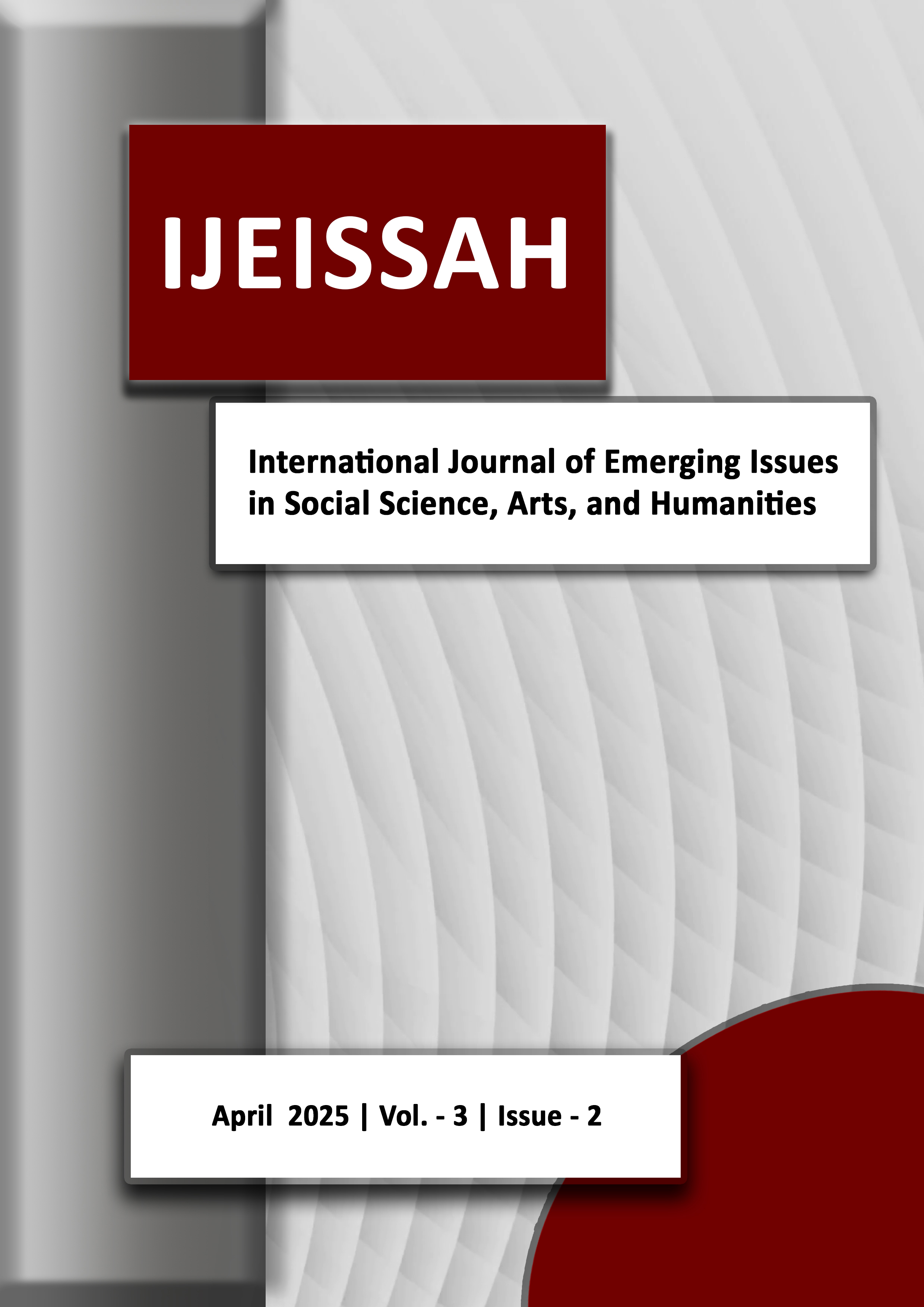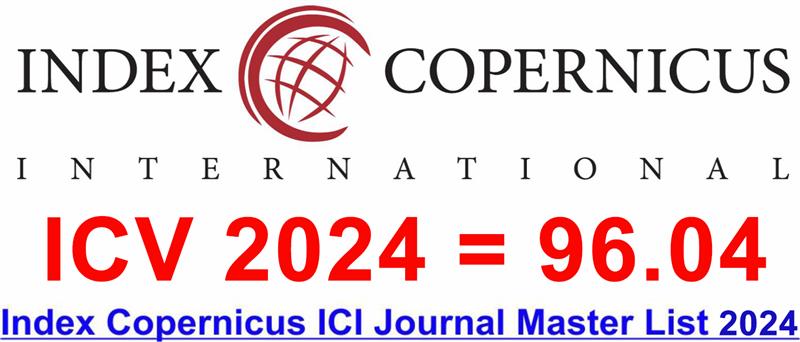Mediating Effect of Employee Loyalty on the Relationship Between Human Resource Management Practices and Employee Performance: A Study among Nurses in The Public Health Care Sector in Yemen
DOI:
https://doi.org/10.60072/ijeissah.2025.v3i02.006Abstract
The study is carried out to explore the impact of HRM practices on employee loyalty, and employee performance among Nurses in The Public Health Care Sector in Yemen. It further investigates the mediating role of employee loyalty with HRM practices and employee performance. The data was collected through a questionnaire. About 248 Questionnaires were filled out by nurses working in government hospitals in Shabwah and Aden governorates. The structure equation modelling SEM was selected as the most suitable statistical technique to test the relationships among the variables of the study. The results showed significant direct relationships between each pair of variables. Moreover, the result revealed that loyalty mediates the relationship between HRM practices and employee performance among nurses in Yemeni public hospitals.
Keywords:
Employee Loyalty, Employee Performance, HRM Practices, Mediation, NurseReferences
Al‐Ahmadi, H. (2009). Factors affecting performance of hospital nurses in Riyadh Region, Saudi Arabia. International journal of health care quality assurance, 22(1), 40-54. DOI: https://doi.org/10.1108/09526860910927943
Al-Dubai, S. A. R., & Rampal, K. G. (2011). Factors Affecting Job Satisfaction among Doctors in Sana’a City Yemen. World Journal of Medical Sciences, 6(3), 146-151.
Al-Meer, A. A. (1995). The relationships of work stress to organisational commitment, job performance, job satisfaction and individual differences: a comparative study. Public Administration, 35(2), 207-52.
Albrecht, S. L., Bakker, A. B., Gruman, J. A., Macey, W. H., & Saks, A. M. (2015). Employee engagement, human resource management practices and competitive advantage: An integrated approach. Journal of organizational effectiveness: People and performance, 2(1), 7-35. DOI: https://doi.org/10.1108/JOEPP-08-2014-0042
Aljayi, Y., Fjer, A., Guennioui, M., & Tamek, A. (2016). Multinational companies’ human resource management practices’ and their organisational culture impact on employees’ loyalty: Case of Japanese multinational company in Morocco. Procedia-Social and Behavioral Sciences, 230, 204-211. DOI: https://doi.org/10.1016/j.sbspro.2016.09.026
Amarneh, B. H., Abu Al-Rub, R. F., & Abu Al-Rub, N. F. (2010). Co-workers’ support and job performance among nurses in Jordanian hospitals. Journal of research in nursing, 15(5), 391-401. DOI: https://doi.org/10.1177/1744987109347134
Antoncic, J. A., & Antoncic, B. (2011). Employee loyalty and its impact on firm growth. International Journal of Management & Information Systems (IJMIS), 15(1).
Armstrong‐Stassen, M., & Schlosser, F. (2010). When hospitals provide HR practices tailored to older nurses, will older nurses stay? It may depend on their supervisor. Human Resource Management Journal, 20(4), 375-390. DOI: https://doi.org/10.1111/j.1748-8583.2010.00143.x
Arsić, M., Nikolić, D., Živković, Ž., Urošević, S., & Mihajlović, I. (2012). The effect of TQM on employee loyalty in transition economy, Serbia. Total Quality Management & Business Excellence, 23(5-6), 719-729. DOI: https://doi.org/10.1080/14783363.2012.669930
Bach, S. (2000). Health sector reform and human resource management: Britain in comparative perspective. International Journal of Human Resource Management, 11(5), 925-942. DOI: https://doi.org/10.1080/095851900422357
Baron, R. M., & Kenny, D. A. (1986). The moderator–mediator variable distinction in social psychological research: Conceptual, strategic, and statistical considerations. Journal of personality and social psychology, 51(6), 1173. DOI: https://doi.org/10.1037/0022-3514.51.6.1173
Byrne, B. M., & Van de Vijver, F. J. (2010). Testing for measurement and structural equivalence in large-scale cross-cultural studies: Addressing the issue of nonequivalence. International journal of testing, 10(2), 107-132. DOI: https://doi.org/10.1080/15305051003637306
Chand, M., & Katou, A. A. (2007). The impact of HRM practices on organisational performance in the Indian hotel industry. Employee relations, 29(6), 576-594. DOI: https://doi.org/10.1108/01425450710826096
Cameron, K. S., Bright, D., & Caza, A. (2004). Exploring the relationships between organizational virtuousness and performance. American behavioral scientist, 47(6), 766-790. DOI: https://doi.org/10.1177/0002764203260209
Chen, C. J., & Huang, J. W. (2009). Strategic human resource practices and innovation performance—The mediating role of knowledge management capacity. Journal of business research, 62(1), 104-114. DOI: https://doi.org/10.1016/j.jbusres.2007.11.016
Cohen, J. (2013). Statistical power analysis for the behavioral sciences. routledge. DOI: https://doi.org/10.4324/9780203771587
Costen, W. M., & Salazar, J. (2011). The impact of training and development on employee job satisfaction, loyalty, and intent to stay in the lodging industry. Journal of Human Resources in Hospitality & Tourism, 10(3), 273-284. DOI: https://doi.org/10.1080/15332845.2011.555734
Dar, A. T., Bashir, M., Ghazanfar, F., & Abrar, M. (2014). Mediating role of employee motivation in relationship to post-selection HRM practices and organisational performance. International Review of Management and Marketing, 4(3), 224-238.
Farrukh, M., Kalimuthuan, R., & Farrukh, S. (2019). Impact of job satisfaction and mutual trust on employee loyalty in Saudi hospitality industry: a mediating analysis of leader support. International Journal of Business and Psychology, 1(2), 30-52.
Fong, L., & Law, R. (2013). Hair, JF Jr., Hult, GTM, Ringle, CM, Sarstedt, M.(2014). A Primer on Partial Least Squares Structural Equation Modeling (PLS-SEM). Sage Publications. ISBN: 978-1-4522-1744-4. 307 pp. European Journal of Tourism Research, 6(2), 211-213.
Huselid, M. A., Jackson, S. E., & Schuler, R. S. (1997). Technical and strategic human resources management effectiveness as determinants of firm performance. Academy of Management journal, 40(1), 171-188. DOI: https://doi.org/10.5465/257025
Janjua, B. H., & Gulzar, A. (2014). The impact of human resource practices on employee commitment and employee retention in telecom sector of Pakistan: Exploring the mediating role of employee loyalty. IOSR Journal of Business and Management, 16(1), 76-81.
Khan, M. A. (2010). Effects of human resource management practices on organizational performance–an empirical study of oil and gas industry in Pakistan. European Journal of Economics, Finance and Administrative Sciences, 24(157-174), 6.
Khuong, M. N., & Tien, B. D. (2013). Factors influencing employee loyalty directly and indirectly through job satisfaction–A study of banking sector in Ho Chi Minh City. International Journal of current research and academic review, 1(4), 81-95.
Meretoja, R., Isoaho, H., & Leino‐Kilpi, H. (2004). Nurse competence scale: development and psychometric testing. Journal of advanced nursing, 47(2), 124-133.
Ministry of Health and Population, Healthcare statistics department. (2014). Annual Statistic Healthcare Report. Sana'a: Ministry of Health, Yemen.
Morgeson, F. P., Aguinis, H., Waldman, D. A., & Siegel, D. S. (2013). Extending corporate social responsibility research to the human resource management and organizational behavior domains: A look to the future. Personnel psychology, 66(4), 805-824.DOI: https://doi.org/10.1111/peps.12055
Mullins, F., Brandes, P., & Dharwadkar, R. (2016). To thine shareholders be true? Linking large corporate ownership to firms’ use of commitment human resource practices. Human Resource Management, 55(4), 567-589. DOI: https://doi.org/10.1002/hrm.21677
Newbrander, W., Waldman, R., & Shepherd‐Banigan, M. (2011). Rebuilding and strengthening health systems and providing basic health services in fragile states. Disasters, 35(4), 639-660. DOI: https://doi.org/10.1111/j.1467-7717.2011.01235.x
Norrish, B. R., & Rundall, T. G. (2001). Hospital restructuring and the work of registered nurses. The Milbank Quarterly, 79(1), 55-79. DOI: https://doi.org/10.1111/1468-0009.00196
Nisar, Q. A., Uzair, M., Razzaq, W., & Sarfraz, M. (2017). Impact of HR practices on employee loyalty and commitment: Mediating role of job satisfaction. International Journal of Management Excellence (ISSN: 2292-1648), 9(2), 1067-1073. DOI: https://doi.org/10.17722/ijme.v9i2.917
Peltier, J. W., Schibrowsky, J. A., & Nill, A. (2013). A hierarchical model of the internal relationship marketing approach to nurse satisfaction and loyalty. European journal of marketing, 47(5/6), 899-916. DOI: https://doi.org/10.1108/03090561311306967
Peltier, J., Nill, A., & Schibrowsky, J. A. (2004). Internal marketing, nurse loyalty and relationship marketing: An exploratory study of German nurses. Health Marketing Quarterly, 20(4), 63-82. DOI: https://doi.org/10.1300/J026v20n04_05
Pfeffer, J. (1994). Competitive advantage through people. Boston/Mass.
Preacher, K. J., & Kelley, K. (2011). Effect size measures for mediation models: quantitative strategies for communicating indirect effects. Psychological methods, 16(2), 93-115. DOI: https://doi.org/10.1037/a0022658
Qirbi, N., & Ismail, S. A. (2017). Health system functionality in a low-income country in the midst of conflict: the case of Yemen. Health policy and planning, 32(6), 911-922. DOI: https://doi.org/10.1093/heapol/czx031
Rashad, H., & Khadr, Z. (2014). Measurement of health equity as a driver for impacting policies. Health promotion international, 29(suppl_1), i68-i82. DOI: https://doi.org/10.1093/heapro/dau045
Samad, S., & Selangor, S. A. (2005). Unraveling the organizational commitment and job performance relationship: Exploring the moderating effect of job satisfaction. The Business Review, 4(2), 79-84.
Shahzad, K., Bashir, S., & Ramay, M. I. (2008). Impact of HR practices on perceived performance of university teachers in Pakistan. International review of business research papers, 4(2), 302-315.
Schleicher, D. J., Baumann, H. M., Sullivan, D. W., Levy, P. E., Hargrove, D. C., & Barros-Rivera, B. A. (2018). Putting the system into performance management systems: A review and agenda for performance management research. Journal of management, 44(6), 2209-2245. DOI: https://doi.org/10.1177/0149206318755303
Shahzadi, I., Javed, A., Pirzada, S. S., Nasreen, S., & Khanam, F. (2014). Impact of employee motivation on employee performance. European Journal of Business and Management, 6(23), 159-166.
Stanton, P. (2002). Managing the healthcare workforce: cost reduction or innovation. Australian Health Review, 25(4), 92-98. DOI: https://doi.org/10.1071/AH020092
Tesfaye, T., Abera, A., Hailu, F. B., Nemera, G., & Belina, S. (2015). Assessment of factors affecting performance of nurses working at Jimma University specialized Hospital in Jimma Town, Oromia region, south-West Ethiopia. J Nurs Care, 4(6), 312.
Van Esch, E., Wei, L. Q., & Chiang, F. F. (2018). High-performance human resource practices and firm performance: The mediating role of employees’ competencies and the moderating role of climate for creativity. The International Journal of Human Resource Management, 29(10), 1683-1708. DOI: https://doi.org/10.1080/09585192.2016.1206031
Wall, T. D., & Wood, S. J. (2005). The romance of human resource management and business performance, and the case for big science. Human relations, 58(4), 429-462. DOI: https://doi.org/10.1177/00187267050550
Whiting, S. W., Podsakoff, P. M., & Pierce, J. R. (2008). Effects of task performance, helping, voice, and organizational loyalty on performance appraisal ratings. Journal of Applied psychology, 93(1), 125. DOI: https://doi.org/10.1037/0021-9010.93.1.125
WHO, EMRO (2006): Health Systems Profile-Yemen. Regional health system observatory available at WHO. 2000. The world health report 2000. Health systems: Improving performance. Geneva: World Health Organisation.
Woodward, A., Sheahan, K., Martineau, T., & Sondorp, E. (2017). Health systems research in fragile and conflict affected states: a qualitative study of associated challenges. Health research policy and systems, 15, 1-12.
Woodward, A., Sondorp, E., Witter, S., & Martineau, T. (2016). Health systems research in fragile and conflict-affected states: a research agenda-setting exercise. Health research policy and systems, 14, 1-14.
Wright, P. M., Gardner, T. M., & Moynihan, L. M. (2003). The impact of HR practices on the performance of business units. Human resource management journal, 13(3), 21-36. DOI: https://doi.org/10.1111/j.1748-8583.2003.tb00096.x
Yao, T., Qiu, Q., & Wei, Y. (2019). Retaining hotel employees as internal customers: Effect of organisational commitment on attitudinal and behavioral loyalty of employees. International Journal of Hospitality Management, 76, 1-8. DOI: https://doi.org/10.1016/j.ijhm.2018.03.018
Yousef, D. A. (1999). Relationship between internal work motivation, organisational commitment, job performance, and personal variables, and empirical study. Public Administration Journal, 39(1), 6-24.
Zakaria, Z., Mohamad, M., Majid, M. N. A., Aziz, N. U. A., & Rashid, K. M. (2019). The Mediating Effect of Job Satisfaction on Employee Loyalty: A Case Study of a Developer Company in Malaysia. KnE Social Sciences, 1018-1029. DOI: 10.18502/kss.v3i13.4264
























